Indian delicacies is legendary around the globe for its wealthy flavours, various components, and colourful spices. Each area in India has its personal particular cooking strategies. North and South Indian meals are well-liked examples.
Then again, many of us are conversant in Indian dishes similar to biryani or tandoori hen, however few acknowledge the stark variations between North and South Indian Delicacies. Let’s discover the original sides of those two wealthy and flavourful meals cultures.
Exploring the Base: Wheat vs Rice
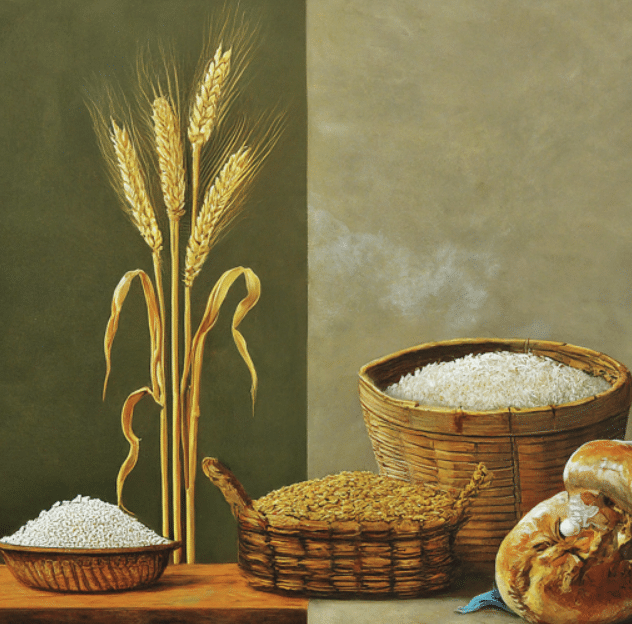
Wheat vs Rice as a core aspect.
The essence of each and every delicacies lies in its core components. Wheat is a very powerful in North Indian dishes like naan, parathas, and rotis, whilst rice is used for dosas and idlis in South Indian delicacies. This displays regional geography and cultural traditions, enriching North and South Indian meals cultures.
Wheat: The Staple in North Indian Delicacies
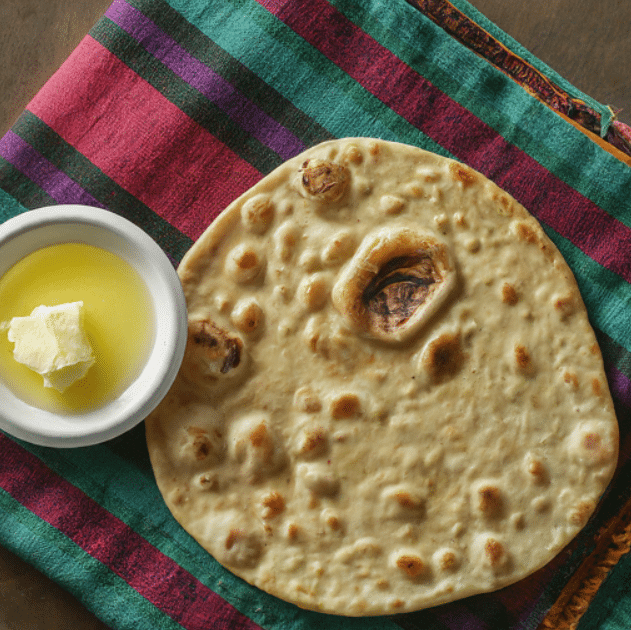
Wheat: The primary aspect in North Indian Delicacies
North Indian delicacies utilises wheat flour in tandoori rotis, naan, parathas, snacks like samosas, and pakoras, and muffins like halwa and sheera, reflecting the area’s agricultural traditions and flexibility with this staple crop.
Rice: The Staple in South Indian Dishes
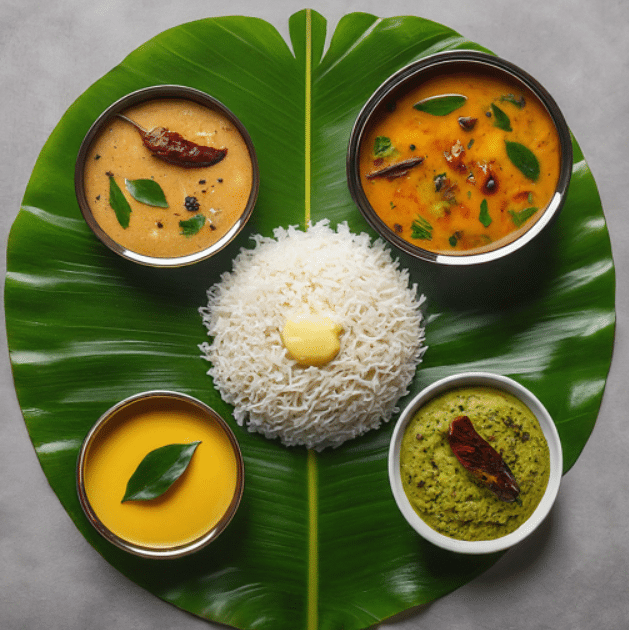
Rice: The primary aspect in South Indian Delicacies
South Indian delicacies highlights rice-based delights similar to dosas, idlis, and appams, every crafted with fermented batters and served with sambar or chutney, showcasing culinary finesse with various fillings.
Which North Indian or South Indian meals has extra sorts?
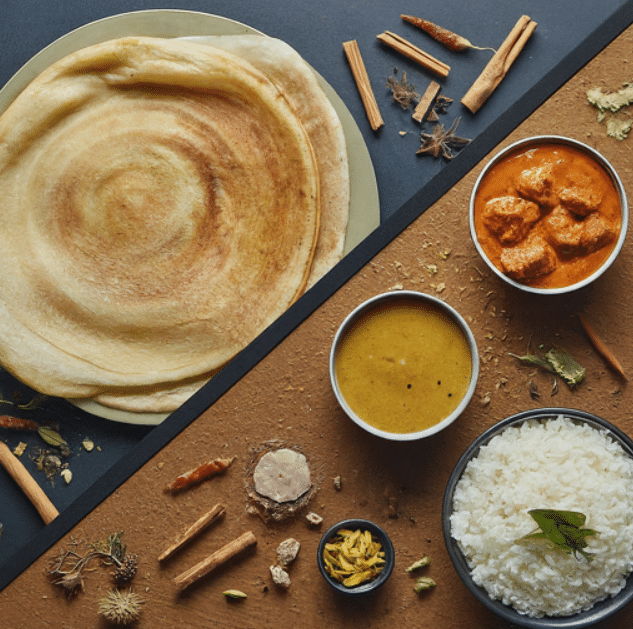
South Indian Tiffen and lunch recipes
North Indian delicacies gives a lot of flavourful dishes for each vegetarians and non-vegetarians. South Indian delicacies options distinct flavours and spices and a big selection of vegetarian dishes.
The Primary Direction: A Story of Two Areas
North Indian delicacies boasts wealthy gravies like malai kofta and butter hen, whilst South Indian dishes be offering tangy delights like masala dosa and lemon rice. Each enchantment to various palates with distinct flavours.
North Indian Primary Lessons
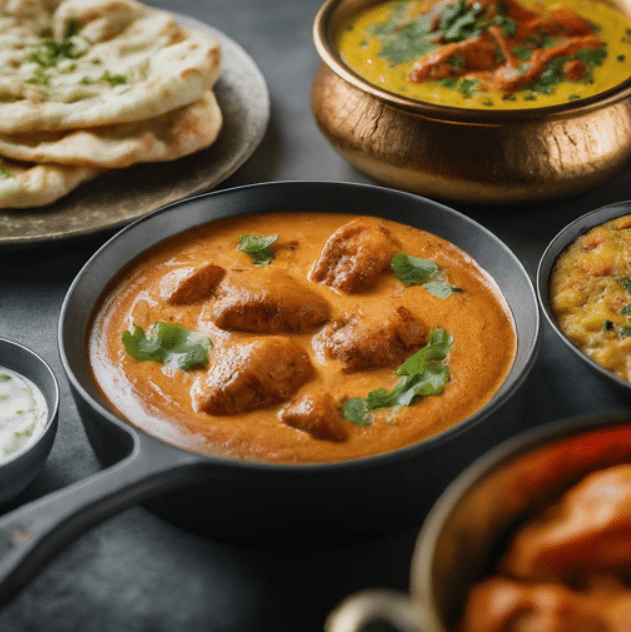
North Indian Primary Direction Sorts
North Indian major classes are well-known for his or her wealthy, flavourful gravies. They mix fragrant spices, cream, and ghee for a creamy and lavish eating enjoy. Some well-liked North Indian major direction dishes come with:
- Malai Kofta: Cottage cheese dumplings in tomato gravy with fragrant spices.
- Butter hen: Soft hen in creamy tomato gravy with spices.
- Rogan Josh: Flavourful lamb curry with fragrant spices.
- Shahi Paneer: Paneer in creamy tomato gravy with cashews and spices.
Those major direction dishes are a testomony to the richness and variety of flavours in North Indian delicacies. Get ready to indulge within the creamy textures and fragrant spices that outline those dishes.
South Indian Primary Lessons
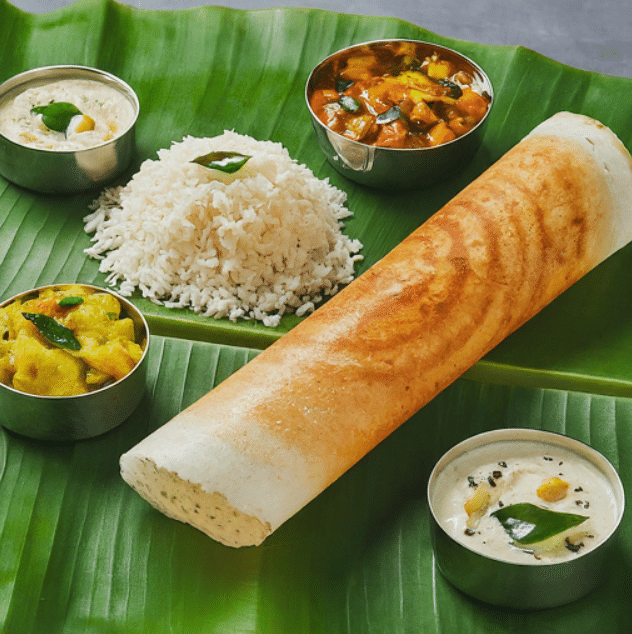
South Indian Primary Direction Sorts
South Indian major dishes are recognized for his or her distinct flavours, with components like tamarind, coconut, and spices for a tangy and refreshing style. Some well-liked South Indian major direction dishes come with:
- Masala Dosa: Crispy crepe with spiced potato filling, served with sambar and chutneys.
- Lemon Rice: Aromatic rice with lemon juice, tempered with mustard seeds and peanuts.
- Avial: Vegetable curry with coconut, yoghurt, and spices, creamy and flavourful.
- Puliogare: Tangy rice dish with tamarind paste and spices.
Those major direction dishes show off the colourful and tangy flavours that South Indian delicacies is understood for.
Different well-liked vintage South Indian favourites surround undeniable cheese dosas (paper-thin crepes stuffed with cheese) and idlis (steamed muffins constituted of fermented rice batter). In the meantime, North Indian recipes come with tandoori hen, aloo paratha (crammed potato flatbread), and dal makhani (black lentils).
Regional Influences
From the coastal shores of Mumbai to the rugged mountains of Kashmir, regional influences play a key function in figuring out the flavours on every area’s plates.
Northern Indian “Mughlai” dishes, influenced through the Mughal Empire, feature-rich spices like saffron and cardamom, cooked with creamy yogurt or cream to create flavourful curries, biryanis, and kababs.
On a opposite observe, southern Indian delicacies has a tendency to lean extra against vegetarian choices because of its lengthy historical past of spiritual nutritional restrictions. Right here, you’ll in finding staples like idli (fermented rice muffins) and dosa (rice pancakes), served with chutneys or sambar for additonal flavour.
Coconut-based South Indian curries and freshly made dosas are tasty choices to North Indian dishes. India’s various culinary traditions be offering distinctive flavours, attracting guests every year for pleasant eating reviews.
Well being at the Plate: Evaluating Dietary Values
Each North and South Indian cuisines be offering various, flavourful dishes. North Indian delicacies is wealthy in cream and ghee, whilst South Indian delicacies options probiotic-rich fermented meals and coconut oil, offering distinctive well being advantages.
The Well being Advantages of North Indian Meals
North Indian delicacies is understood for its wealthy flavours, which come from components like heavy cream and ghee. Moderation in intake is a very powerful because of their top saturated fats content material, making sure accountable delight in North Indian meals.
The Well being Advantages of South Indian Delicacies
South Indian delicacies is really useful for well being, with fermented meals like dosas and idlis offering probiotics for intestine well being and coconut oil providing benefits similar to stepped forward middle well being, weight control, and mind serve as because of its MCT content material.
The Spice Diaries: North vs South
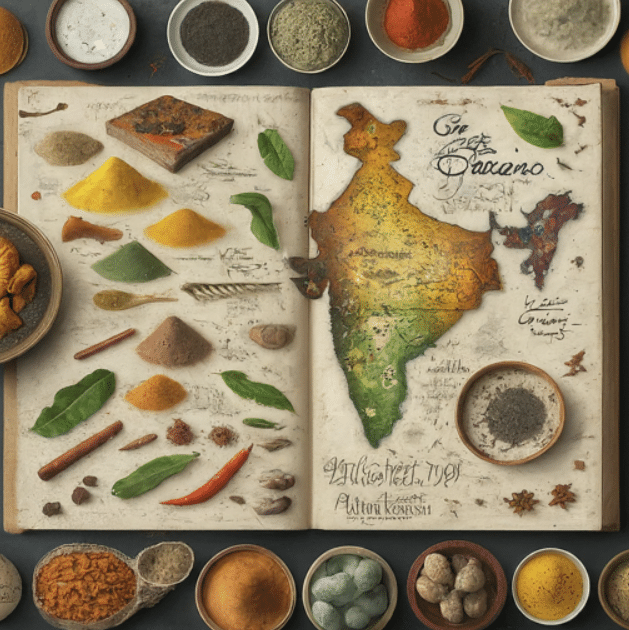
Primary Spices of North Indian and South Indian Cooking
Spices play a a very powerful function in Indian delicacies. North Indian delicacies, with its Mughal heritage, is understood for intense spice and herb utilization. Unusually, Southern Indian dishes characteristic a large quantity of flavourful components like coconut milk, tamarind, and curry leaves, bettering style with out overpowering it. Whilst North Indian meals is based closely on wealthy masalas (spice combinations) for flavour, southern dishes depend extra on advanced mixtures like candy and bitter or highly spiced and tangy mixtures.
North Indian delicacies boils or fries greens for curries, whilst South Indian delicacies prefers flame-roasting for a smoky flavour. Distinctive herb possible choices like cilantro within the North and basil within the South make stronger regional rice pilafs, providing a various vary of spices for a novel culinary enjoy.
From fiery vindaloos in Goa to gentle Malabari stews in Kerala, this exceptional range guarantees everybody can experience one thing scrumptious anywhere their travels take them. Right here, let’s take a sneak peek into spice mixes distinctive to each cuisines:
Spices Mixes Distinctive to North Indian Recipes
North Indian recipes depend on a lot of spices to create their signature flavours. Some not unusual spices utilized in North Indian cooking come with:
- Garam Masala: Warming mix of cinnamon, cardamom, cloves, and black peppercorns.
- Cumin Seeds: Nutty and earthy flavour staple in North Indian cooking for dishes like dal and curries.
- Dry Pink Chillies: Upload warmth and colourful crimson color to North Indian recipes, used powdered or in tempering for curries.
Those spices, at the side of different fragrant components, give a contribution to the powerful and flavourful style of North Indian delicacies.
Spice Mixes Distinctive to South Indian Meals
South Indian delicacies is famend for its distinctive spice blends and flavours. Some spice mixes which are distinctive to South Indian meals come with:
- Sambar Powder: Flavourful combine with roasted lentils and spices for sambar.
- Huli Pudi: Tangy spice mix for rasam soup in South Indian delicacies.
- Curry Leaves: Staple in South Indian cooking, including aroma to curries and rice dishes.
Those spice mixes, at the side of the fragrant flavours of curry leaves, give a contribution to the original and colourful style of South Indian delicacies.
Additionally, the Southern dishes have a tendency to be spicier, emphasising tamarinds, chillies and masalas. Additionally, sambar from Kerala incessantly depends on coconut milk for its creamy texture whilst the use of fewer spices to offer delicate but advanced spice profiles. Then again, the northern area is based closely on dairy merchandise like yogurt, cream, ghee (clarified butter), and paneer cheese. Then again,
With this figuring out of ways they range, we will acquire an appreciation for each kinds of cooking, which provide one thing distinctive for each and every palate.
Now, allow us to focal point on some other major factor that differentiates those two kinds: preparation tactics.
Preparation and Cooking Ways
The preparation and cooking tactics utilized in North Indian and South Indian cuisines show off the range of Indian cooking. Some variations come with:
North Indian Delicacies: North Indian dishes are recognized for gradual cooking strategies like simmering and tandoor cooking in clay ovens. Speedy pot utilization may be not unusual for speedy foods.
South Indian Delicacies: South Indian cooking emphasises steaming, tempering, and fermenting batters for dosas and idlis. Foods are adapted for particular occasions of the day, that includes various choices like dosas, rice dishes, and curries.
To sum up, North and South India be offering various culinary traditions, every with distinctive flavours and displays.
Most sensible 10 Variations Between North and South Indian Meals
There are a number of distinct variations between North Indian and South Indian meals, showcasing the range and richness of Indian delicacies. Listed here are the highest 10 variations:
- Staples: North Indian delicacies basically makes use of wheat because the staple, whilst South Indian delicacies depends on rice.
- Bread vs Rice: North Indian delicacies gives a lot of breads like naan and roti, whilst South Indian delicacies options rice-based dishes like dosas and idlis.
- Spices: North Indian delicacies makes use of spices like garam masala and cumin seeds, whilst South Indian delicacies comprises spices like sambar powder and curry leaves.
- Seafood: South Indian delicacies options all kinds of seafood dishes, whilst North Indian delicacies focuses extra on meats like hen and mutton.
- Coconut: Coconut is a distinguished aspect in South Indian delicacies, whilst it’s utilized in a extra restricted capability in North Indian delicacies.
- Snacks: North Indian delicacies gives snacks like samosas and pakoras, whilst South Indian delicacies options snacks like vadas and idlis.
- Fermented Meals: South Indian delicacies comprises fermented meals like dosas and idlis, which aren’t as prevalent in North Indian delicacies.
- Dairy: North Indian delicacies makes use of dairy merchandise like ghee and cream extra broadly, whilst South Indian delicacies is based extra on coconut milk and yoghurt.
- Regional Influences: North Indian delicacies has been influenced through Persian and Mughlai flavours, whilst South Indian delicacies comprises regional flavours from states like Tamil Nadu and Kerala.
- Selection: Each cuisines be offering all kinds of dishes, however South Indian delicacies is understood for its various vary of flavours and vegetarian choices.
Those variations spotlight the original traits and culinary traditions of North Indian and South Indian meals.
Conclusion
North and South Indian cuisines show off distinctive charms in a flavourful combat. Wheat laws the North, whilst rice dominates the South. Aromatics, regional components, and numerous cooking tactics mix cultures and flavours onto one plate. Thus, each North and South Indian Delicacies exemplify India’s wealthy tradition, proving from time immemorial that no adventure thru India is entire with out experiencing a pleasing exploration of its flavourful fare.
Regularly Requested Questions
Which is more healthy, North Indian or South Indian meals?
Evaluating the well being advantages of North Indian and South Indian cuisines is difficult. South Indian meals helps intestine well being with fermented dishes, whilst North Indian delicacies supplies protein and necessary vitamins. Moderation in eating ghee and coconut oil is suggested.
Which is extra tasty, South Indian meals or North Indian meals?
Evaluating the tastes of South and North Indian meals is subjective. South Indian delicacies is understood for its spiciness and tanginess, whilst North Indian dishes are wealthy in flavours and aromas. Each have distinctive culinary identities that cater to various palates.

Leave a Reply